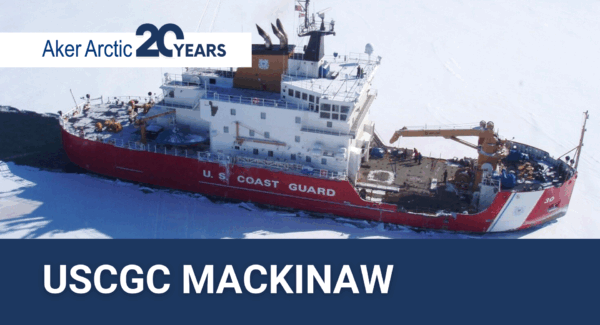Offshore wind farms need robust foundations
Aker Arctic’s core expertise is to produce and develop services and products that enable sustainable and safe operations in ice-covered waters. Apart from icebreakers and other ice-strengthened vessels, this includes offshore wind park foundations which face similar challenges as vessels in icy waters.

Over the past year, Aker Arctic has been delving deeper into offshore wind farm developments, in particular investigating the challenges farms face in ice conditions and how to solve them in the most efficient way.
As a result, a clear strategy has been developed regarding how best to serve customers, ways to extend services, and increase expertise in this special field.
“Our offshore wind strategy is to develop and design cost-efficient, sustainable and robust foundations for offshore wind parks which can withstand ice in addition to open water conditions,” outlines Julian Wehnert who is responsible for developing offshore wind services at Aker Arctic.
The design process encompasses the entire lifecycle of the foundations, including production, transportation, and installation, along with the operation and decommissioning of the wind park once it reaches the end of its expected lifetime in 25-30 years.
Green transition is an opportunity
Companies can battle climate change not only through their own actions but also by developing new business opportunities and participating in the green transition.
To steer the development in the correct direction, the European Union has set tight emission targets and Finland aims to become carbon-neutral by 2035. Consequently, there are many offshore wind parks being planned now, part of them in waters with significant ice challenges.
Cost-efficiency in ice
Risk evaluations prior to investments require detailed information about costs. While construction prices for offshore wind parks in open water areas are already quite well known, ice induced costs are more demanding to establish.
An offshore wind park is a power plant generating electricity into the national grid to be used by industry, companies, and households. Construction and service costs of the park will thus have a direct effect on the levelized cost of energy.
“Our target is to help investors minimize the added price tag of ice conditions so that the electricity price of a certain project is close to those wind parks situated in open water areas,” Wehnert highlights. “With our expertise in ice, we can add clear monetary value to our clients.”
Sustainable foundations
Lifecycle cost analysis is factored in all Aker Arctic’s projects, including considering the requirement to minimize each project’s carbon footprint.
“In practice, we want to count all the emissions from the production of construction materials and transportation,” Wehnert clarifies. “In the future, we will also be able to include installation and decommissioning in our figures.”
Aker Arctic’s goal is to utilise domestic and local resources as much as possible in all designs, thus avoiding costs and emissions from long transportation processes.
Growing the team
Currently, Wehnert is working closely with the Aker Arctic consultancy team in offshore wind park projects. However, the target is to grow the team to include specialists that focus on offshore wind farm foundations.
“In ship design projects, a large team collaborates to develop designs. The same applies to offshore wind farm foundations where our service concept includes comparing different solutions, planning how to attach the foundations, designing the actual substructure tailored for suitable turbines, in addition to cost evaluation and lifecycle cost analysis,” Wehnert says.
He adds that Aker Arctic’s future target is to participate in all major design phases of a project: feasibility studies where plans are outlined; concept evaluation where promising concepts are compared; pre-FEED design (front-end engineering) and FEED.
Recent projects
In one of Aker Arctic’s recent projects, ice loads on various floating foundation options were investigated, as well as the combined load impact from other environmental factors such as wind speed and waves.
“We also conduct our own research to learn more about different phenomena, such as the recent evaluation of ice loads on windmill monopile foundations performed in our own ice basin,” Wehnert notes.
Model tests are the only reliable way of investigating and comparing different foundations before investment decisions are made.
“Our expertise in ice applies to all constructions used in ice-covered waters. By expanding our know-how and sharing it with customers, we want to contribute to the global effort to combat climate change and the progress of sustainable energy production. In the end, we only have one planet,” he adds.
Text: Catarina Stewen


